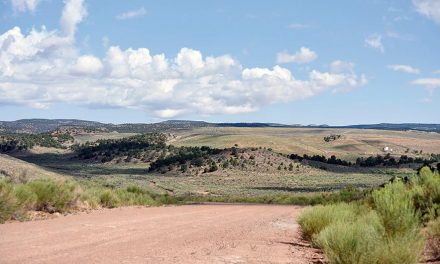
50 Years Ago: Judge rules against Ceremonial protesters
As members of a Navajo activist group, Indians Against Exploitation, began preparing to hold protests at the 1970 Gallup Inter-Tribal Indian Ceremonial, a federal judge made a ruling on a protest held at the 1969 event.
Four Navajo students – Michael Benson, June Tracy, Linda Hubbell and Eddie Brown – had filed a lawsuit against the Ceremonial after officials forced them to leave the grounds of the event after they passed out anti-Ceremonial leaflets. With the help of two DNA attorneys, the four accused the Ceremonial of violating their rights, but the federal judge in the case, Ewing Kerr, saw it differently.
He agreed with the position of the Ceremonial that the students were causing a disturbance during the event by passing out the leaflets on Ceremonial grounds.
He also pointed out that no one was arrested and they were allowed to pass out the leaflets off Ceremonial grounds. The four expressed disappointment at the ruling and said they were considering filing an appeal.
The Navajo Times announced this week that the Navajo Tribal Utility Authority was planning to increase rates to customers by as much as seven percent due to increases they were facing from their supplier. Yes, there were some customers who complained, saying they were living on welfare and couldn’t afford the rate increase, which happens every time NTUA announces a price increase.
So how much more did customers have to pay? The average increase was 36 cents a month. The average monthly rate for NTUA at the time was $2.63.
The big story this week in national Indian news was the passage of a bill that would give Alaskan tribes $1 billion to settle their land claims against the federal government.
At 2020 rates, this would have been more than $6 billion. Under the settlement, the tribes would share $500 million from the federal government to be paid over a 12-year period.
They would get another $500 million over the same period from oil and gas royalties. The tribes, which had asked for ownership of an extra 40 million acres of federal land, would receive 10 million acres.
One of the biggest achievements of Navajo Tribal Chairman Raymond Nakai was getting Fed-Mart to set up a store in Window Rock along with a guarantee that prices would be the same as at their other stores. Everyone wondered how they could do this, given the extra costs of transporting these goods an extra 300 miles.
Well, the Navajo Times provided a good idea of how the company was able to do that and say the Window Rock store was its most profitable. The Times reported that U.S. Rep. Sam Steiger had just introduced a bill in Congress that would give the company $17.3 million to train minority employees. So apparently the company was making a profit by having the federal government pay a good share of its employee costs.
The Times reported that the Republic of Vietnam had given a Navajo soldier two medals posthumously. Spec. 4 Calvin D. Largo was given the Military Merit medal as well as the Gallantry Cross with Palm. The awards were given to his mother, Esther Garnenez, by representatives of the military who traveled to her home in Shiprock to deliver them in person.
Largo died on Sept. 18, 1968, from wounds he received during hostile action in South Vietnam. Besides these medals, he had received numerous medals from the U.S. government, including the Bronze Star, the Purple Heart and the Good Conduct Medal.
If you were a Navajo housewife in 1970, you will probably remember the name Louise Dahozy. She had been working for the Office of Navajo Economic Opportunity for the previous two years but she became known to thousands of Navajo women when she began hosting a 15-minute daily program on radio stations that broadcast all or part of their daily programming in Navajo.
According to the Times, Dahozy came up with the idea of a daily program meant just for Navajo homemakers, giving them tips on new foods to prepare and how to make their lives easier. Topics centered on issues that deal with the housewife. The Times reported that it had become the most listened-to Navajo program during the daytime. If the story were written today, she would probably be called the Navajo Martha Stewart.







 Highway 264,
Highway 264, I-40, WB @ Winslow
I-40, WB @ Winslow